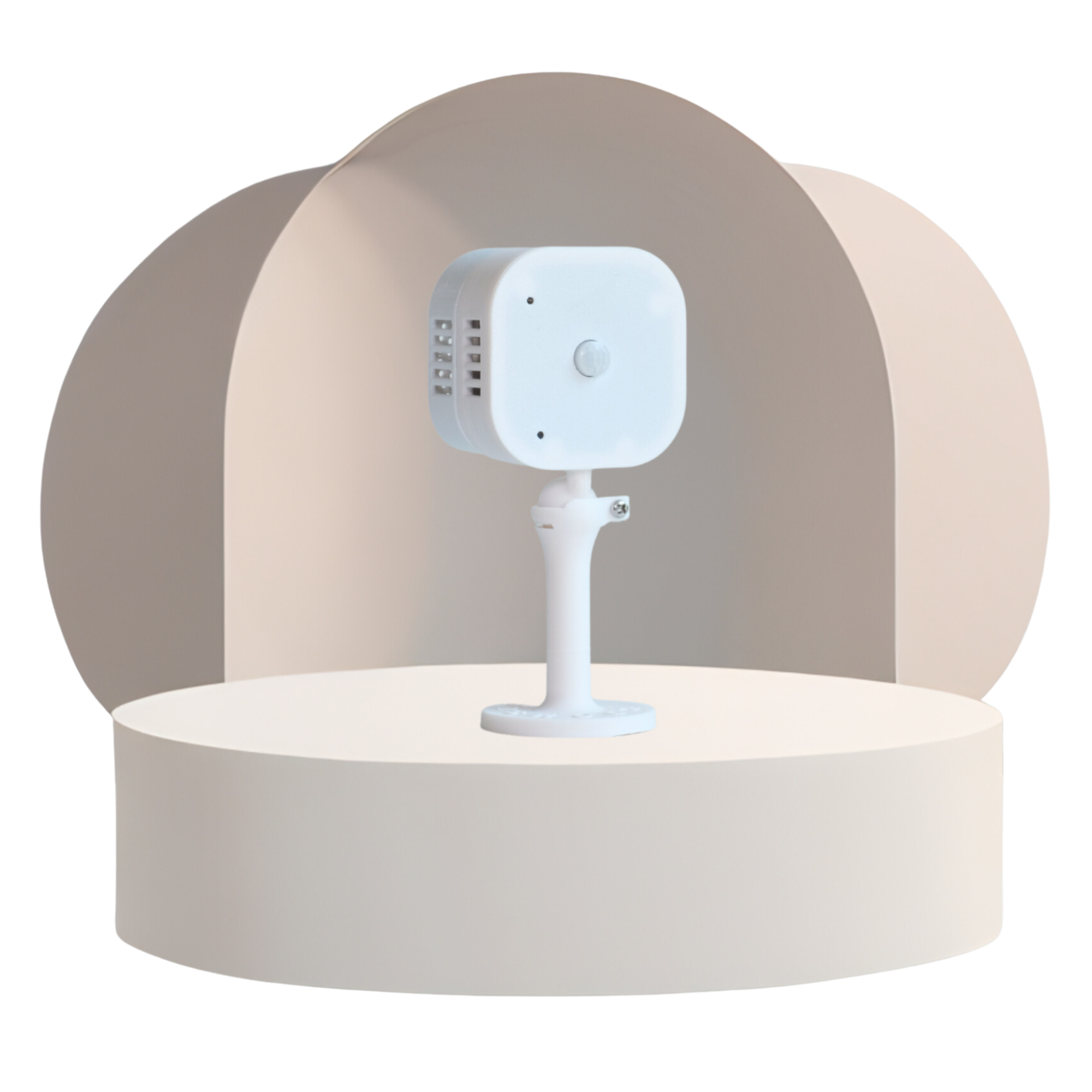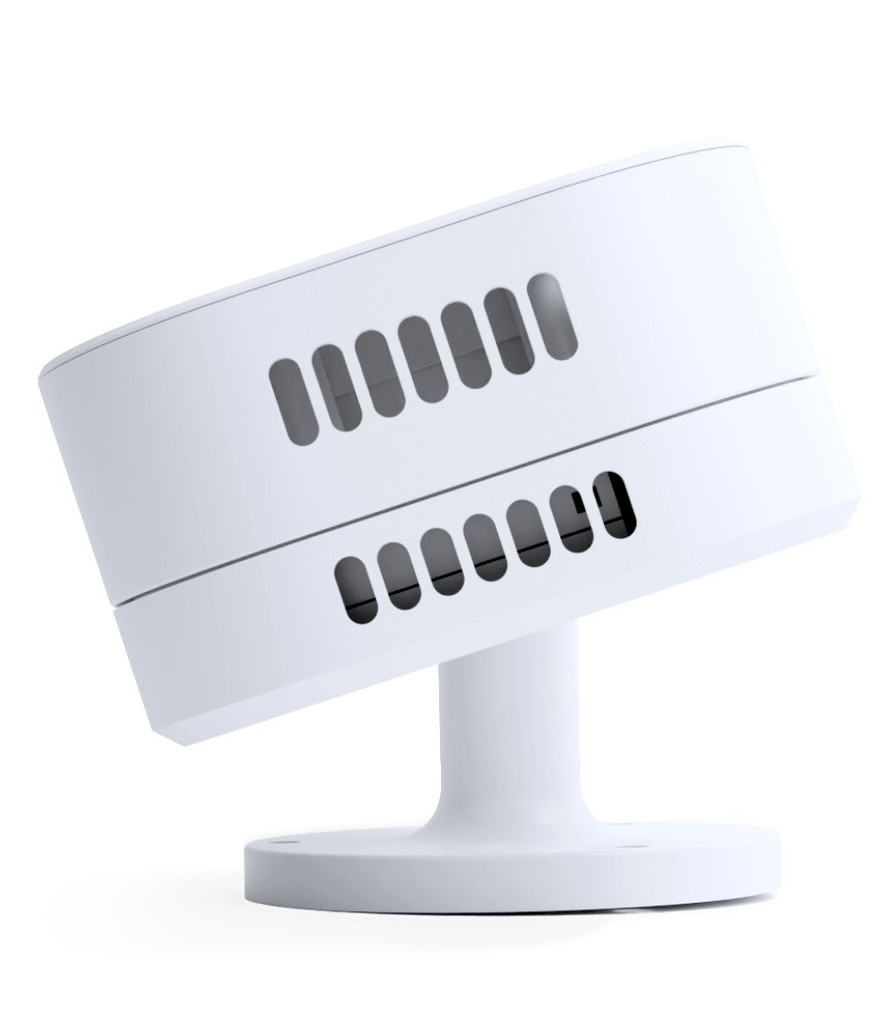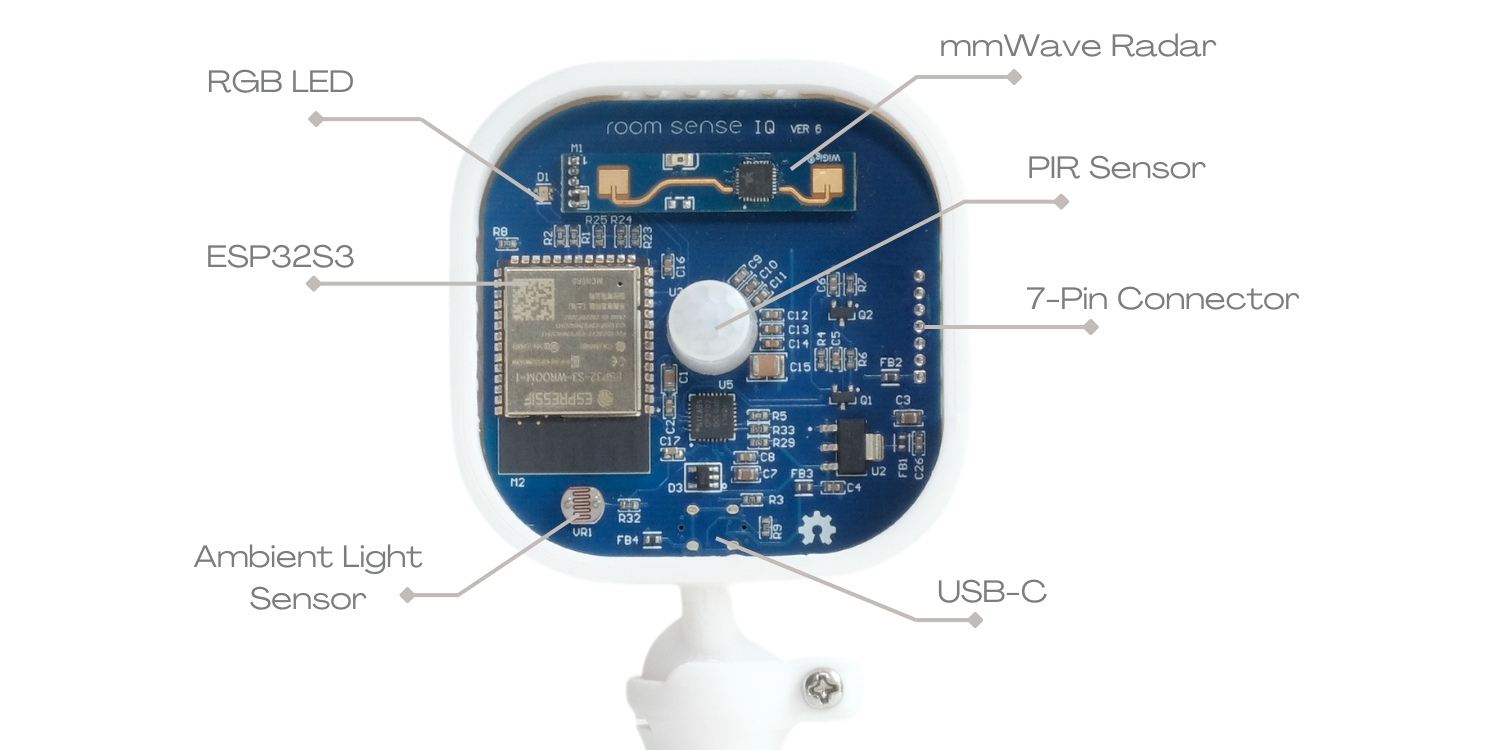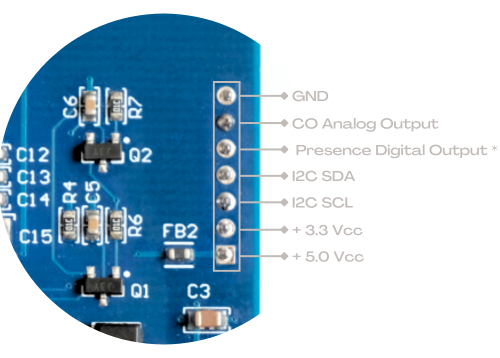Reference Guide

Note: Ensure your RoomSense IQ is updated with the latest firmware to fix known issues.
Welcome to the Refrence Guide for RoomSense IQ! We're delighted to have you on board and excited to assist you in maximizing your experience with this innovative offering. This guide is designed to provide you with clear and comprehensive instructions, ensuring that you can effortlessly navigate and make the most of all the features and functionalities RoomSense IQ has to offer. Whether you're a seasoned user or just getting started, this guide will serve as your go-to resource, empowering you to unlock the full potential of your device. Let's embark on this journey together, discovering the ins and outs of this amazing sensor device.
Introduction
RoomSense IQ allows smart-home enthusiasts to automate household infrastructure based on their physical presence. It makes your heating, cooling, ventilation, lighting, entertainment, air-filtration, home-security, and emergency-alert technology—among other essential services—smarter, easier to manage, and more efficient. Create a truly harmonious living environment that knows where you are, and has a pretty good idea what you’re up to, but does not share that information with a third party unless you tell it to. You remain in control without having to manage so many…controls.
If indoor air-quality monitoring isn’t on your list of priorities for home-automation, it probably should be. Poor air quality can lead to respiratory issues such as asthma and allergies, and carbon-monoxide buildup can be life threatening. Our ClimateSense modules integrate seamlessly with RoomSense IQ to monitor indoor-climate conditions like temperature, humidity, CO₂ levels, smoke, and other such indicators. ClimateSense provides actionable insights to help you keep your living and working spaces healthy, comfortable, and productive.

Hardware
RoomSense IQ is built around the the powerful ESP32-S3 SoC, which supports Wi-Fi connectivity and enables seamless integration with existing IoT networks and other systems that facilitate realtime data transmission and remote monitoring. It utilizes mmWave radar to detect presence and movement, within a 120° arc, at ranges of up to six meters. To ensure precise detection and reduce false positives, RoomSense IQ is also equipped with a passive infrared (PIR) sensor that filters out non-human activities such as spinning fans and wind-blown curtains.
By accurately measuring ambient illumination, the built-in light sensor can automatically adjust lighting conditions to optimize energy consumption and create a more comfortable environment. A multi-purpose RGB LED conveys at-a-glance status information, and a USB Type-C interface draws power and handles serial communication. Finally, our ball-mount enclosure allows you to orient the sensors in any direction. Maximize coverage by positioning RoomSense IQ in a corner of the room it’s monitoring or accommodate unique deployment with custom placement.
IQ Main Components

7-Pin Connector

* The Presence Digital Output pin is an open-collector type, controlled by occupancy status. It turns ON when the room is occupied and OFF when it's vacant, capable of driving a load of up to 1W. This makes it ideal for hard-wired automation applications.
Key Features
- Web-based dashboard interface for baseline calibration and movement classification
- Home Assistant integration via MQTT over Wi-Fi
- Compatible with Amazon Alexa, Apple HomeKit, and Google Home through IFTTT
- Distance-based zone detection & blacklisting
- Movement classifier with a refresh rate of 25 Hz
- Baseline calibration for false-alarm management
- Pet-friendly calibration
- Realtime and trend values
- Support for over-the-air (OTA) firmware updates
- Configurable IP addresses and MQTT port
Technical Specifications
- ESP32-S3 SoC with Wi-Fi connectivity
- Multi-purpose RGB LED
- USB Type-C for power and serial communication
- Thermally isolated enclosures for optimal sensor accuracy
- A ball-mount enclosure design that allows you to orient sensors in any direction
- Power consumption: 80 mA at 5 V
- Board dimension: 5.5 x 5.5 cm (2.1 x 2.1 inches)
The table below explaining the different colors of the RGB LED and their meanings:
|
LED Color |
Meaning |
|---|---|
|
Flashing Blue/Orange |
Looking for WiFi connection |
|
Flashing Blue |
Looking for MQTT broker connection |
|
Solid Blue |
Room vacant |
|
Solid Orange |
Room occupied |
|
Flashing Red |
Hardware issue |
|
* Flashing Yellow |
Elevated airborne condition |
|
* Flashing Purple |
Extreme airborne condition |
* Only for ClimateSense.
RoomSense IQ is an open-source hardware project. You can find the latest schematic design on our GitHub page.
